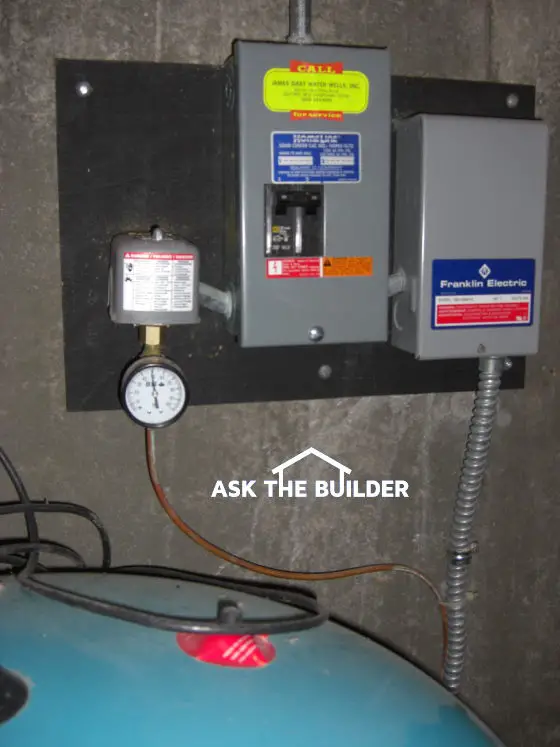Low Water Pressure

Low Water Pressure | This gauge on the water system tells you how much pressure you have. PHOTO CREDIT: Tim Carter
DEAR TIM: I’ve got low water pressure in my house. Is there any way to improve it? My neighbors all seem to have much better pressure, and we’re all on the same city water main out at the street. I do also have this problem at a summer cabin where the water is supplied by a well. What are the main causes of poor water pressure? How can they be fixed? Frankie S., Kingston, RI
DEAR FRANKIE: I sure can sympathize about your low water pressure. The house I purchased in New Hampshire has minimal water pressure. The house I moved from had great high water pressure, just under 85 pounds per square inch (psi). I’m lucky now to have 45 psi.
You did the right thing checking to see if your water pressure was prevalent in your neighborhood. I know many city locations where water pressure is low in every house on adjacent streets. As crazy as this sounds, you’ll often have this problem at houses up on top of a hill very close to one of those massive water towers that help create pressure in a municipal water system.
My house in New Hampshire is on a well, and the pressure gauge clearly shows that my pressure is just above minimum standards. I’m going to install a water pressure booster pump several weeks from now to solve my problem.
As for the causes of low pressure, there are so many I just can’t list them all. In your case, the main water line feeding your home could have a kink in it that’s restricting water flow. The line could be partially clogged with deposits. You may have some sort of inline water filter that’s clogged with debris and this is restricting the flow.
If your home is an older one and has galvanized iron water pipes, the horizontal pipes that run under floor joists could be clogged. This is very common, while believe it or not, the vertical pipes that run between floors don’t suffer from this sedimentation issue to the same degree.
Some people suffer from point-of-use low water pressure. The most common locations are showers and kitchen and bathroom faucets. To comply with Federal water-use regulations, shower heads have flow restrictors in them.
These restrictors have very tiny holes in them to slow down the flow of water. Very tiny pieces of sediment can quickly clog these openings. When enough openings get clogged, you see the water pressure drop faster than a falcon going after a pigeon.
You can see water pressure drop drastically at a kitchen or bathroom vanity faucet for the same reason. But in this case, the pieces of sediment clog holes in a similar plastic disc and the aerator that creates the uniform flow of water.
Shutoff valves within your system could be partially closed causing the problem. Perhaps someone turned down the main shutoff valve at your house and didn’t open it up fully after a repair was completed.
Your home water pressure might be suffering because of a faulty water pressure relief valve. You can determine this, with some effort, by installing a water pressure gauge on each side of the pressure relief valve or a pressure reducing valve.
The gauges tell you the pressure being supplied by the city water main or the well pump. But the secondary pressure gauge, installed downstream of the other valves will tell you how much the pressure has dropped because of those other devices that are in your water system.
If you have water pressure issues just at a few faucets and your shower heads, you can pretty easily solve the problem. Just carefully remove the aerator from a faucet and carefully take it apart away from the sink so parts don’t fall into the abyss. Remove a shower head and pull out the flow restrictor.
Use a pin or needle to push sediments out of the holes. Soak the parts in warm white vinegar to remove scale buildup. Let the parts soak overnight, and then lightly scrub with an old toothbrush.
If you’re thinking of adding pressure gauges or replacing clogged pipes, be sure you test your plumbing skills first. Also make sure you’re allowed to perform DIY repairs on your water pipes. Some localities prohibit this and require work to be performed by a licensed plumber.
I shared this information in my opens in a new windowFebruary 9, 2011 AsktheBuilder Newsletter.
Column 865